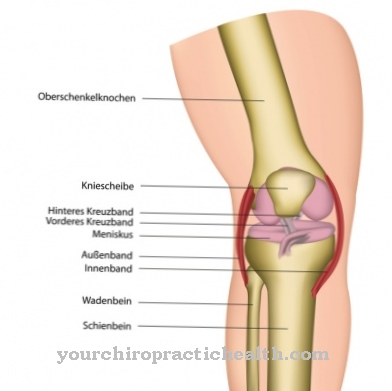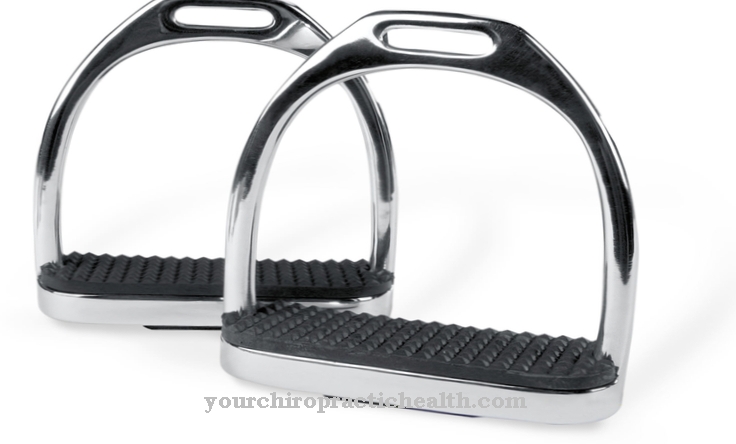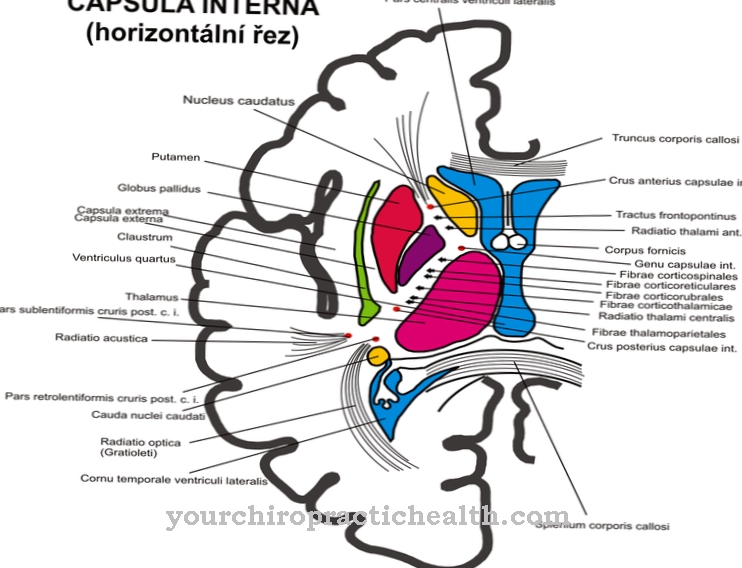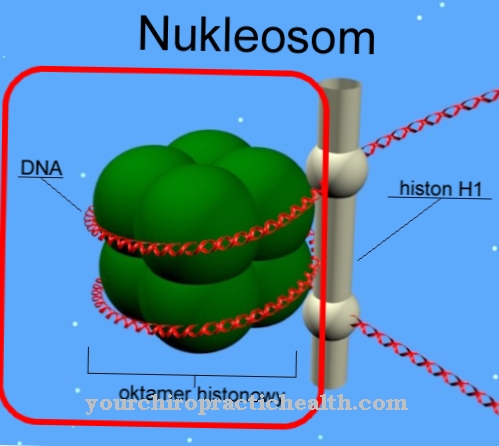The Achilles tendon is one of the most important tendons in the human body, as without it it would be impossible to move on two legs. How is this tendon constructed? What functions and tasks does it perform? And what kind of complaints can arise in connection with the Achilles tendon?
What is the Achilles tendon?

The Achilles tendon connects the important flexor muscles of the calf with the foot skeleton and can withstand a tensile load of almost a ton. This makes it the strongest and thickest tendon in the human body.
Its name goes back to the Greek hero Achilles. According to legend, when he was a child, his mother, the goddess Thetis, immersed him in the river Styx, the water of which was supposed to make immortal. The mother held her son by the heel so that this was the only part of the body that was not wetted by the water. In this way, the otherwise immortal Achilles kept a "sore point", his Achilles tendon.
It was precisely there that he was struck by an arrow in the battle for Troy and died. Regardless of the mythology, the Achilles tendon can also become a weak point in real life because it is strong, but still sensitive.
Anatomy & structure
The Achilles tendon is the end tendon of the three-headed calf muscle and measures around 15 to 20 centimeters. It is covered by a tendon sheath and consists of several tendon bundles, which in turn are composed of collagen fibers.
The Achilles tendon attaches to the so-called duckbill process of the heel bone, which is pulled upwards as soon as the muscle tenses. It is clearly visible and also easy to feel that the Achilles tendon protrudes a little. This space between the tendon and the muscle or the tendon and the lower leg bone is filled by fat and connective tissue.
Functions & tasks
The task of Achilles tendon consists in flexing the foot. This flexion takes place in the direction of the sole of the foot, this is called plantar flexion. The Achilles tendon is also involved in the outward edging of the foot, the medical term here is supination.
Seen figuratively, the Achilles tendon acts like a cable that transfers the force from the calf muscles to the heel bone. The calf muscles tighten and relax again.
This movement is transmitted to the heel bone and thus to the foot with the aid of the Achilles tendon. Thus, the function of the Achilles tendon is to flex the ankle, which pulls the front part of the foot down with force.
Thanks to the Achilles tendon, the foot can smoothly push itself off the ground, which in turn enables running and walking. The Achilles tendon therefore fulfills one of the most important motor functions of the human body.
Diseases
Despite the great burden that the Achilles tendon can withstand, injuries are still common. Mostly, excessive and incorrect strain on the tendon play a role.
Incorrect or excessive stress can lead to minor injuries and inflammation, which leads to a disturbed blood supply to the tissue. In such cases it is often sufficient if the tendon is spared and cooled. However, if you ignore recurring pain in the Achilles tendon, this can affect its strength - an Achilles tendon rupture is often the result. The tendon suddenly tears, which is not infrequently noticeable as a loud noise and pain.
In such a case, an operation is necessary, especially for young, sporty people, so that rapid healing and 100 percent resilience are guaranteed. In order to avoid problems with the Achilles tendon, it is important to ensure stable calf and foot muscles, for example through sport and specific gymnastics. In this way, the Achilles tendon is relieved.
Stretching exercises and a slow warm-up are also important, which is particularly recommended before jogging, mountain hiking and other intense sporting activities. This makes the muscles and tendons supple and therefore more resilient. In any case, it is advisable to consult an orthopedic surgeon in the event of pain in the Achilles tendon in order to prevent a painful Achilles tendon tear and a lengthy healing process.













.jpg)

.jpg)
.jpg)











.jpg)